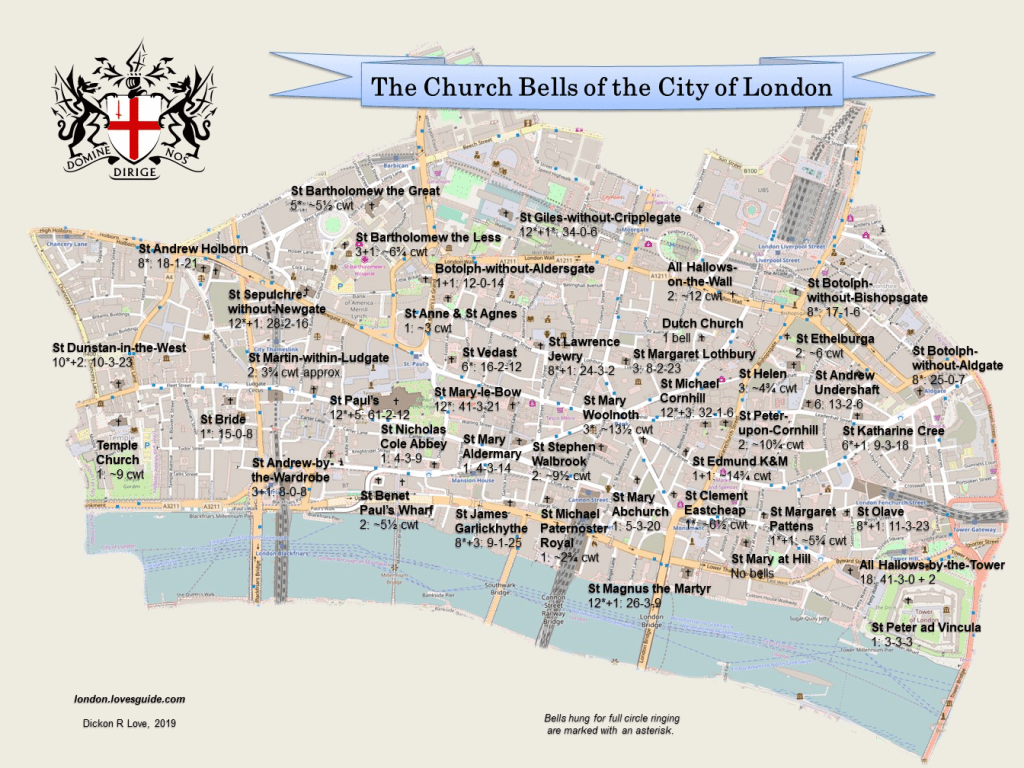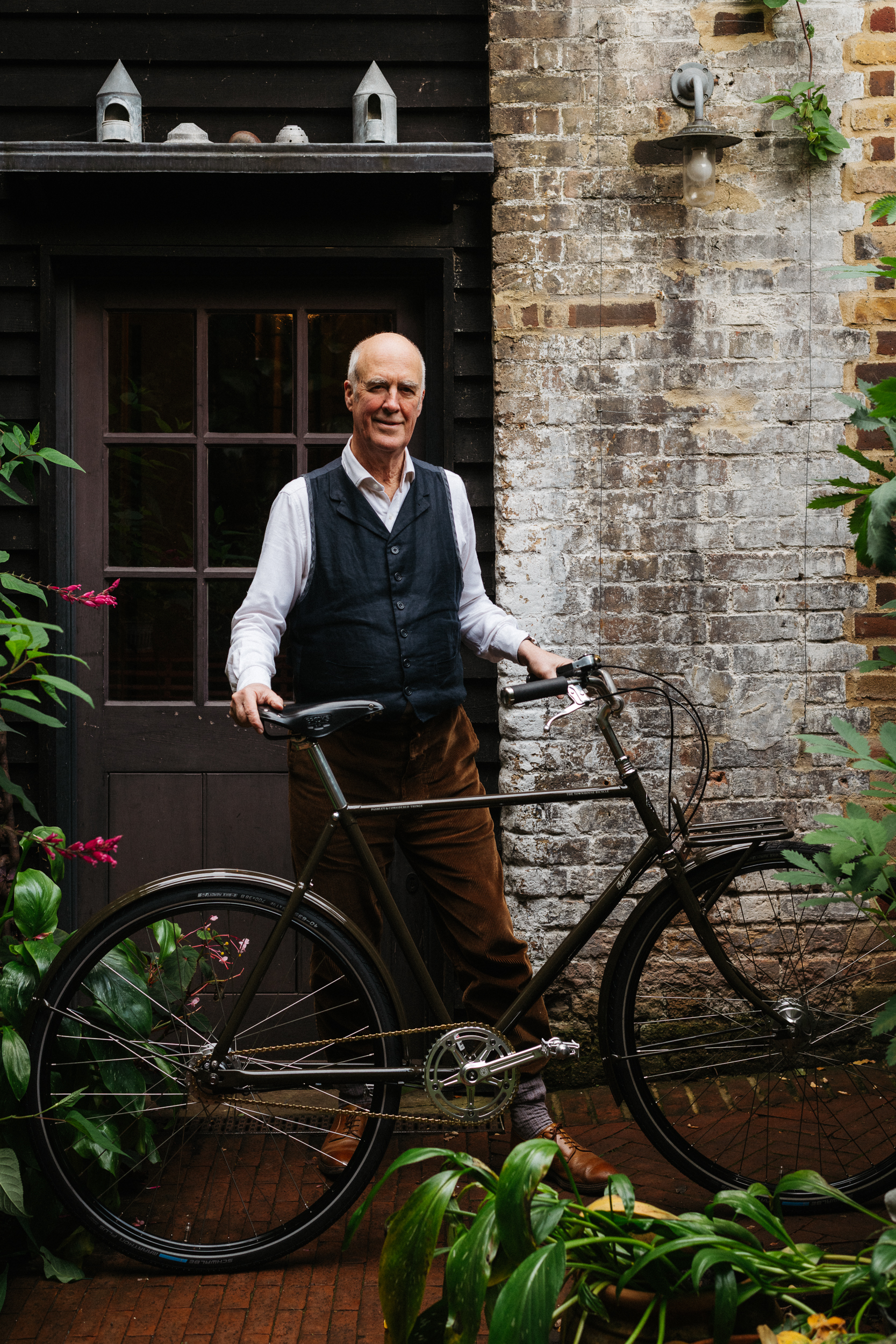I did a talk last night at the London Salon alongside Dickon Love, the King of the London Bell Ringers. He talked movingly about bell ringing. I had not fully realised the extent to which quite a number of the most important bells in the City Churches are actually quite recent, all of them made by the Whitechapel Bell Foundry, which was extraordinarily important to the manufacture of bells in London not just in the eighteenth and nineteenth century, but also more recently, in the post-war period when so many city churches were bombed or their bells had been taken down and they then had to be re-cast or re-hung. Dickon made the point very clearly that the Bell Foundry was responsible not just for the casting of bells, but for the craft of installing them. He has a website ‘Love’s Guide to the Church Bells of London’ (http://london.lovesguide.com/) which has a map of all the church bells of the City:-

Someone made the point during the discussion afterwards, which is right, that we should have involved the City more in the effort to save the Bell Foundry, which is such an important part of its history, as well as of Whitechapel’s.
Then, I talked about what in retrospect was the tragedy of the failed campaign to save it – except that there is now hope that it could be saved after all. I realised that it was the first time that I had talked about it publicly because so much of the campaign was online during COVID. Some points emerged as I talked:-
- It may seem a small point, but it was probably significant that neither the original edition of Pevsner, nor the more recent edition, pays much attention to the Bell Foundry, because by itself it is not a building of conventional architectural importance. Its extraordinary interest was in the fact that it is a vernacular building which preserved its original use intact since it first opened as a Bell Foundry in 1744. John Summerson recognised this when he published Georgian London after the war. It is a part of the fabric of London’s history. So did Ian Nairn.
- Historic England made a decision to support its conversion to a hotel very early on in the process in early February 2017, before the campaign to save it had got going and once the decision had been made by the London Advisory Committee, it was apparently irreversible, never discussed by the Commissioners who had ultimate responsibility for its fate. The decision was made before it was clear that there was a viable alternative plan to keep it as a working foundry put forward by Factum Foundation and Re-Form who are capable of operating a foundry by widening the operation from church bells only. Historic England’s statutory responsibility should have been to preserve the existing use, instead of encouraging the developer’s plan to turn it into a hotel.
- I showed the scheme which was put forward by 31:44 to make a hotel next to the Bell Foundry in a style which sort of copied it. Unprompted by me, everyone laughed because the scheme was, in some way, ridiculous: there was no way that you preserved the character of the Bell Foundry by building a massive hotel sort of in the style of the original building with a bell on its top which could have been rung annually to mourn its loss.
- The Minister in charge of approving the redevelopment was Robert Jenrick. He was to sign its death warrant in spite of the fact that he had posted on twitter that he thought it was a really bad idea.. It needed a Minister who was better versed in the procedure of how to save it.
But, there is now an opportunity to reinstate the Bell Foundry as a Foundry and I hope the current Secretary of State, Michael Gove, might address it.
The hotel scheme is dead. The land on which it was going to be built is no longer available. The building has been put on the market (on Right Move) for sale or rent. The London Bell Foundry which has been established to make bells by artists (https://www.thelondonbellfoundry.co.uk/) has a viable business plan and has made an offer to the agents handling the sale either to lease it or to buy it on the recommended commercial terms. The planning inquiry imposed conditions which require any lessee to reinstate a Bell Foundry.
What it now needs is for Bippy Siegal who bought the Bell Foundry in 2017 and his New York investors to recognise that this is the best solution to save the foundry which made the Liberty Bell. They might have to take a small financial loss, but it is possible that there is no alternative.
Someone somewhere must be in a position to persuade him that this would be the best and right thing to do.

I dont seem to be able to leave comments on your posts any more for some reason
Just wanted to say – Your talk was so good! I wish it could have been recorded or filmed. And enjoyable to be in an audience with so many bellringers!
>
You have succeeded. Whatever you did was right. Charles